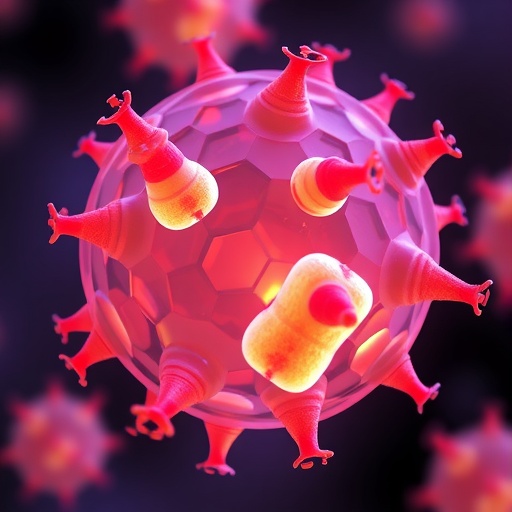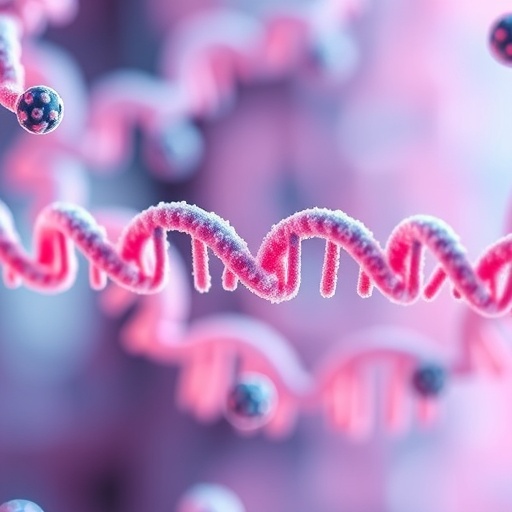
In a groundbreaking discovery that could reshape our understanding of greenhouse gas mitigation, scientists have identified an entirely new class of enzymes capable of converting nitrous oxide (N₂O) — a potent climate-warming gas — into harmless dinitrogen (N₂). This previously unrecognized protein family, termed clade III lactonase-type nitrous oxide reductases (L-N₂ORs), diverges significantly in sequence from the well-studied canonical NosZ enzymes, yet remarkably retains functional and structural features necessary for N₂O reduction. The findings, published in Nature, represent a pivotal expansion of the known microbial mechanisms that consume N₂O, potentially altering models of atmospheric nitrogen cycling and offering novel prospects for biotechnological interventions.
Nitrous oxide, often overshadowed by carbon dioxide and methane, commands outsized attention in climate science due to its extraordinary global warming potential—roughly 300 times that of CO₂ over a century. Anthropogenic activities, such as fertilized agriculture and industrial processes, have driven N₂O concentrations to unprecedented atmospheric levels, exacerbating the urgency for targeted strategies to mitigate this powerful greenhouse gas. Microbial N₂O reductases, which enzymatically convert N₂O into benign dinitrogen gas, have stood central in understanding natural sinks that counterbalance N₂O emissions. Historically, these enzymes have been limited to two canonical clades—clade I and clade II NosZ reductases — whose distribution and activity shape nitrogen fluxes in soils and aquatic environments globally.
The discovery of clade III L-N₂ORs challenges this established paradigm by revealing a new family of enzymes with a distinct evolutionary lineage but conserved catalytic capacity. The research team employed integrated metagenomic analyses, employing large-scale sequencing of environmental DNA to uncover genetic sequences encoding putative N₂O reductases that defied classification within known clades. These sequences, embedded predominantly within genomes of uncultured microbial taxa, especially within the phylum Nitrospinota, retained the hallmark three-dimensional protein folds essential for catalytic function. Structural modeling underscored the conservation of active site architectures, suggesting that despite divergent primary sequences, these enzymes robustly catalyze the reduction of N₂O.
.adsslot_GMbca7Opou{width:728px !important;height:90px !important;}
@media(max-width:1199px){ .adsslot_GMbca7Opou{width:468px !important;height:60px !important;}
}
@media(max-width:767px){ .adsslot_GMbca7Opou{width:320px !important;height:50px !important;}
}
ADVERTISEMENT
Physiological assays further substantiated the biochemical capabilities of L-N₂ORs. Cultures and environmental samples expressing these novel enzymes demonstrated clear N₂O reduction activity, validating their functional relevance in situ. This combination of genomics, proteomics, and biochemical experimentation presents compelling evidence that the diversity of N₂O reductases in nature has been substantially underestimated. The presence of L-N₂OR genes across geographically disparate ecosystems points to a wider and more complex web of microbial N₂O consumption than formerly recognized.
These revelations carry far-reaching implications for biogeochemical nitrogen cycling models. Nitrous oxide fluxes have often been modeled based on the activities of known microbial players mediating nitrification, denitrification, and associated reductive steps. By neglecting clade III L-N₂ORs, prior models may have underestimated natural N₂O sinks, thereby skewing predictions of future atmospheric N₂O trajectories and their feedbacks to climate change. Incorporating this newly identified enzymatic diversity promises more accurate representation of N₂O fate, crucial for policymaking and environmental planning.
Moreover, the identification of L-N₂ORs opens innovative avenues in biotechnology. Harnessing or engineering microbes equipped with this novel enzyme family could enhance bioremediation strategies to curb N₂O emissions from agricultural soils, wastewater treatment plants, and industrial effluents. As global efforts intensify to curtail greenhouse gas emissions, microbial catalysts such as L-N₂ORs represent promising bio-tools for integrating ecological function with engineered solutions.
Understanding why clade III L-N₂ORs remained hidden until now underscores the limitations of traditional cultivation and enzyme characterization approaches. Many of the taxa encoding these enzymes remain uncultured, eluding classical microbiological methods that rely on laboratory growth. Metagenomics-enabled discovery circumvents these hurdles by capturing genetic and functional diversity directly from environmental samples. This methodological leap empowers researchers to uncover cryptic biological processes, exemplified by this newly discovered nitrous oxide reductase family.
The evolutionary divergence of L-N₂ORs from canonical NosZs suggests complex evolutionary trajectories wherein functional constraints preserved essential catalytic architecture despite sequence variability. This highlights nature’s innovation in sustaining critical biochemical functions via divergent molecular scaffolds. Future structural biology endeavors aimed at resolving L-N₂OR crystal structures will be crucial to illuminating mechanistic details pivotal for catalysis and stability, informing both evolutionary biology and applied sciences.
Furthermore, the presence of L-N₂ORs in Nitrospinota and other uncultured groups invites renewed exploration of these enigmatic microbial clades. They might play previously unappreciated roles in global nitrogen cycling, challenging assumptions about ecological functions within microbial communities. Expanding cultivation efforts and environmental surveys guided by these findings will further elucidate the ecological niches and activity patterns of these organisms.
From a climate science perspective, improved quantification and monitoring of L-N₂OR-expressing microbes in natural and managed ecosystems will refine estimates of N₂O fluxes. Enhanced resolution of microbial dynamics empowers more accurate assessment of mitigation potential and feedbacks under changing environmental conditions, such as warming temperatures and nutrient loading. Incorporating microbial enzyme diversity into Earth system models promises to sharpen predictions of greenhouse gas trajectories and inform global climate strategies.
The discovery of L-N₂ORs also raises intriguing questions concerning regulation and integration of this new enzymatic function in microbial metabolism. Understanding gene expression controls, electron donors, and interaction with other nitrogen cycle components will be essential for elucidating the ecological and biochemical integration of these enzymes. Such insights will enable rational design of microbial consortia or synthetic biology constructs tailored for maximal N₂O reduction efficacy.
In sum, the unveiling of the clade III lactonase-type N₂O reductase family marks a milestone in environmental microbiology and climate science. Beyond expanding enzymology, this discovery reshapes our grasp of Earth’s nitrogen cycle resilience and interplay with atmospheric processes. By illuminating a hidden microbial pathway for nitrous oxide mitigation, it galvanizes interdisciplinary research and innovation aimed at combating anthropogenic climate change. As we face mounting environmental challenges, such revelations remind us of the vast unknowns still embedded in microbial life and their transformative potential for a sustainable future.
Subject of Research: Microbial enzymes catalyzing nitrous oxide reduction and their role in global nitrogen cycling and climate change mitigation.
Article Title: A novel bacterial protein family that catalyses nitrous oxide reduction.
Article References:
He, G., Wang, W., Chen, G. et al. A novel bacterial protein family that catalyses nitrous oxide reduction. Nature (2025). https://doi.org/10.1038/s41586-025-09401-4
Image Credits: AI Generated
Tags: anthropogenic nitrous oxide emissionsatmospheric nitrogen cycling modelsbacterial protein discoverybiotechnological interventions for climate changeclade III lactonase-type nitrous oxide reductasesenvironmental impact of agricultural practicesglobal warming potential of nitrous oxidegreenhouse gas mitigation strategiesmicrobial mechanisms of N₂O consumptionN₂O to dinitrogen conversionnitrous oxide reduction enzymesnovel enzyme families in climate science





